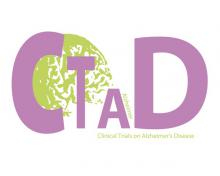Abstract: Background: Decline in physical function is associated with increased frailty and hospitalization, resulting in decline of mental status and loss of functional independence. Nursing homes engage residents with variable intensity and frequency of physical activities to reduce functional decline. However the extent to which the physical function of nursing home residents change (that is, improve, maintain or decline) remains unknown. Objectives: The aims of this study were to document the change in physical function and functional category among 222 nursing home residents over a period of 9 months; and to identify the factors associated with changes in their physical function. Design: This is a longitudinal and multi-site study, with outcomes measured at point of recruitment and measurements repeated every three months for nine months. Setting: Three nursing homes in Singapore. Participants: A total of 222 residents (59% male and 41% female) with a mean age of 77.4 years, and an average length of stay of 64 days, participated in the study. Participants did not differ significantly from the 698 total residents in terms of age, number of medical comorbidities and physical function. The key exclusion criteria preventing participation in the study were cognitive status (MMSE < 11) and being placed on cardiac and pulmonary precautions. Measurements: Physical function was measured using the following outcome measures: sit and reach for flexibility, single leg stance for balance, 5 times chair-stand for overall lower extremity muscle strength, 10-meter walk tests for gait speed, and Modified Barthel Index (MBI) for activities of daily living (ADL). Participants were categorised into functional categories (“Fun”, “Functional”, “Frail”, “Failure”) for each test. Factors that are potentially associated with changes in physical function such as number and type of physiotherapy sessions received, number of hospitalisations, age, and length of stay, Charlson Comorbidity Index, and baseline Geriatric Depression Scale were also recorded. Results: There were significant improvements between baseline to 3rd month in flexibility (sit and reach distance from toe in centimeters) [2.69; 95% confidence interval [CI] = 1.05, 4.34; p = .001], balance (single leg stance in seconds) [8.46; 95% CI = 6.81, 10.12; p < .001), MBI [5.06; 95% CI = 2.61, 7.51; p < .001] but not strength and gait speed. Improvements were maintained until 9th month except on flexibility test. Gait speed significantly improved between baseline and 9th month [0.13, 95% CI = .009, .242; p = .035]. The group that improved the most were those who were in the “Failure” group at baseline. Number and type of physiotherapy sessions as well as number of hospitalisations was found to be associated with the extent of improvement in physical function. Conclusions: The study suggests that current rehabilitation framework at these nursing homes has the potential to enhance the physical function of residents who are in the earlier stage of their nursing home stay. Modifiable variables such as number and types of physiotherapy sessions appear to be significant factors associated with these outcomes. Hence, further studies examine the optimum frequency and type of physiotherapy sessions for this population.
(1) L. Yong, P. Upendranatha Reddy, J. Tan, D. Avers, P.-H. Ong, W.-P. Wong Jour Nursing Home Res 2020;6:6-13



